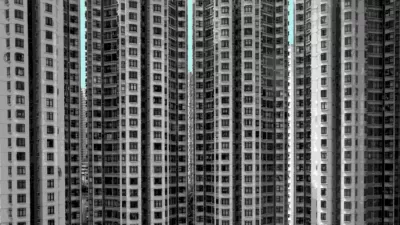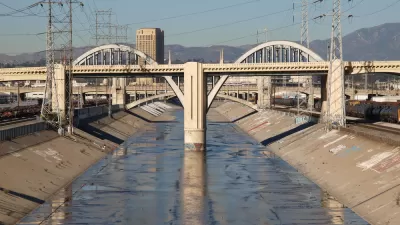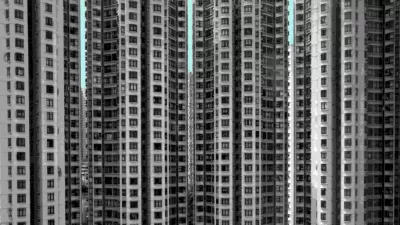A versatile building material with a long pedigree, concrete also has associations with ugliness and totalitarianism. Its reinforced variety, widely used today, can conceal a costly flaw.

From ancient Rome to modern China, concrete is one of humanity's favorite building materials. Tim Harford looks at concrete's history and how we view it. "Architecturally, concrete implies lazy, soulless structures: ugly office blocks for provincial bureaucrats; multistory parking garages with stairwells that smell of urine. Yet it can also be shaped into forms that many people find beautiful—think of the Sydney Opera House, or Oscar Niemeyer's cathedral in Brasilia."
Concrete is versatile, but it isn't easily repurposed. "That's the fundamental contradiction of concrete: incredibly flexible while you're making something, utterly inflexible once it's made." It's also long-lasting, and will outlive materials like wood and metal.
But that's not necessarily the case for all buildings constructed from concrete. Harford writes, "Reinforced concrete is much stronger and more practical than the unreinforced stuff. It can span larger gaps, allowing concrete to soar in the form of bridges and skyscrapers. But here’s the problem: if cheaply made, it will rot from the inside as water gradually seeps in through tiny cracks in the concrete and rusts the steel."
There are methods to prevent that decay, but it's already causing problems in the U.S., and will soon cause issues in China's "concrete forests" of high-rise housing. Harford suggests that perhaps concrete is best used where it can immediately improve needy people's lives, and gives us several examples.
FULL STORY: How Concrete Cemented Its Place in History

Study: Maui’s Plan to Convert Vacation Rentals to Long-Term Housing Could Cause Nearly $1 Billion Economic Loss
The plan would reduce visitor accommodation by 25,% resulting in 1,900 jobs lost.

North Texas Transit Leaders Tout Benefits of TOD for Growing Region
At a summit focused on transit-oriented development, policymakers discussed how North Texas’ expanded light rail system can serve as a tool for economic growth.

Using Old Oil and Gas Wells for Green Energy Storage
Penn State researchers have found that repurposing abandoned oil and gas wells for geothermal-assisted compressed-air energy storage can boost efficiency, reduce environmental risks, and support clean energy and job transitions.

Private Donations Propel Early Restoration of Palisades Playground
Los Angeles has secured over $1.3 million in private funding to restore the Pacific Palisades playground months ahead of schedule, creating a modern, accessible space that supports community healing after recent wildfires.

From Blight to Benefit: Early Results From California’s Equitable Cleanup Program
The Equitable Community Revitalization Grant (ECRG) program is reshaping brownfield redevelopment by prioritizing projects in low-income and environmental justice communities, emphasizing equity, transparency, and community benefits.

Planting Relief: Tackling Las Vegas Heat One Tree at a Time
Nevada Plants, a Las Vegas-based nonprofit, is combating the city’s extreme urban heat by giving away trees to residents in underserved neighborhoods, promoting shade, sustainability, and community health.
Urban Design for Planners 1: Software Tools
This six-course series explores essential urban design concepts using open source software and equips planners with the tools they need to participate fully in the urban design process.
Planning for Universal Design
Learn the tools for implementing Universal Design in planning regulations.
Ascent Environmental
Borough of Carlisle
Institute for Housing and Urban Development Studies (IHS)
City of Grandview
Harvard GSD Executive Education
Toledo-Lucas County Plan Commissions
Salt Lake City
NYU Wagner Graduate School of Public Service




























